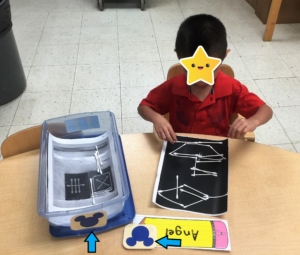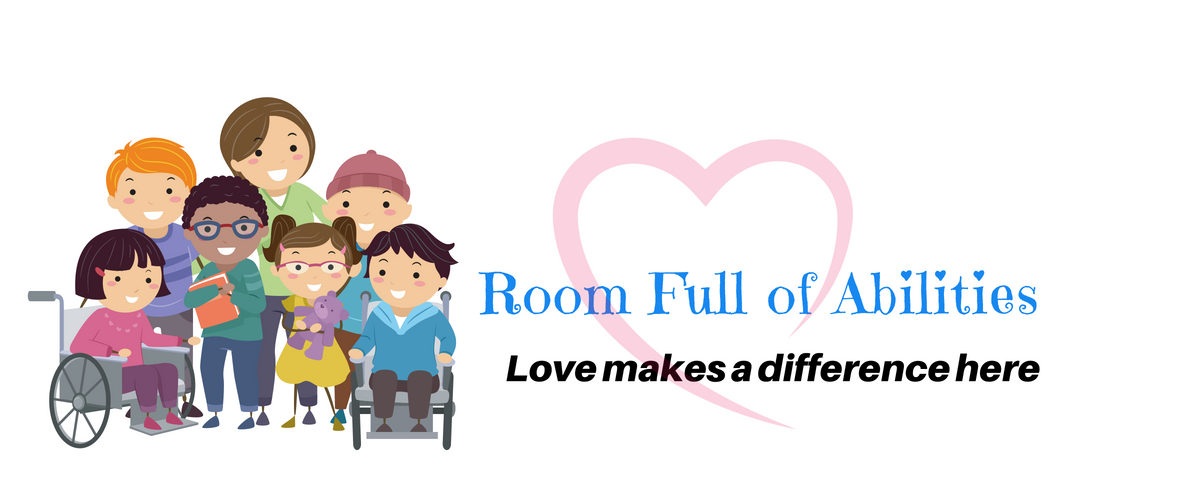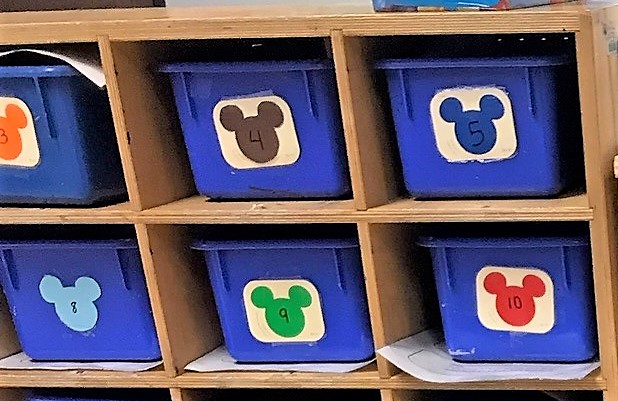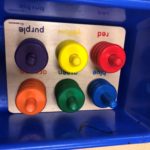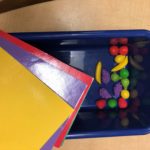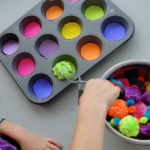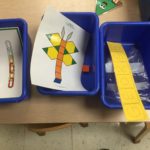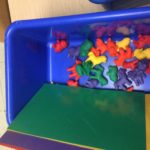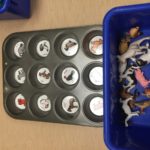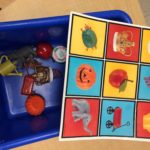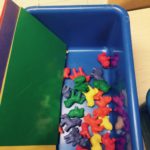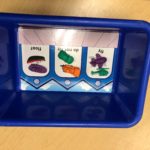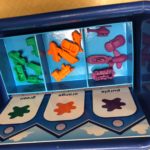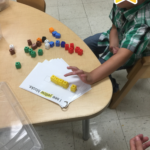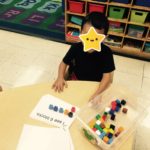This post may contain affiliate links and as an Amazon Associate, I may earn a small compensation from qualifying purchases. All opinions and recommendations are my own.
Purpose? These boxes/tubs have multiple purposes. I created them to provide practice in areas that have been identified as a need, which may be an IEP goal, to promote independence, to make use of every precious minute and to increase pre-kindergarten skills.
What are Work Boxes?
You may know them as Morning Work, Work Task Box, Task Basket or Independent Work. I became interested in using them for our children with an autism diagnosis and quickly realized they are fabulous for everyone! Adapting the TEACCH method for task boxes I set up this system. TEACCH is a very systematic system used to set up a classroom for students with Autism. Ours is not as detailed but works for us. During workbox time, I can observe whether my students have mastered skills and take data for progress reports and state assessments (TSG). The workboxes provide my students the opportunity to gain some independence by following multi-step directions and finding their own workbox using a simple matching task.
When do we use them?
We have our workbox time built into our routine right after we eat. We eat our meals in the classroom. As soon as a student lets us know they are finished eating they are excused and begin following the clean-up routine after a meal. There is no need to have them wait for others to finish, especially when there is consistently one or two kids who can take an hour if we let them. (Come on, you know who they are in your room!) Once they’ve cleaned up they find their workbox and begin completing the task.
How do we use them?
We have a workbox for each child plus 2. Since we have two sessions, 2-3 yr old and 4-5 yr olds (roughly), we put together enough boxes for both classes and two extra. The tasks are things that can be completed independently and are “practice”. Each child is expected to locate their box and take it to the table. They complete the task and let an adult know they are finished before putting it away. If they put it away before an adult has “approved” it, they must complete it again with the adult present.

Where are the adults?
OK, you might be thinking, “what do the adults do during this time?” In our classroom, there are 3-4 adults present at the tables during workbox time. One of us is attending to those still eating and tidying up the area. Tasks are introduced if the child hasn’t seen the exact task before. We are observing several kids each and jotting down notes, taking pictures or videos or using check sheets to document progress. We help those who need it, redirect those who get distracted and intervene if we notice something is being done incorrectly. The purpose, after all, is for the children to practice the correct way of doing something until they’ve mastered it. Having said this, we are also afforded the time to do attendance and take the food cart back to the cafeteria during this time once they get more independent.
What is inside the workboxes?
That’s possibly the most frequently asked question. I asked the same question when I started making them. First, I searched the topic then looked on Pinterest. Yes, this was actually something I pinned AND followed through on from Pinterest! Does anyone else spend hours on Pinterest saving things with intentions of making some really cool things, and then never actually completing anything? UGH! Add it to my list of “distractions that swallow time!” I also visited a few classrooms that use a form of a workbox, which I highly recommend doing! As teachers, we know that it saves massive amounts of time to get ideas from each other. “Why recreate the wheel when there are so many great ideas out there?” I started by using clear shoebox size tubs from Dollar Tree or .99 store. For items inside the tubs, we mainly use materials we already have in the room and are getting quite genius at putting together some really fun tasks using pieces from games or other manipulatives in the room. I do purchase some .99 items, like colored plastic silverware to sort, pomp-poms, Q-tips, those weekly pill boxes, tongs, colanders, plastic flowers, colorful plastic straws, just to name a few. The first time we set these up, we set the boxes out on the table and started placing items inside that we knew could be completed independently. Things like sorting tasks, stringing beads, matching, tracing, cutting, potato head, counting, fine motor tasks, etc. I think we had 10 students in one class and 14 in another so we made 24 boxes plus 2. It sounds like a lot, but tasks can be the same in more than 1 box. By the end of the year we had everyone tracing (shapes, letters, their name…) and cutting – so they boxes were all pretty much the same. Partly because we needed simple and partly (mostly) because everyone was ready to practice those skills and needed to start mastering them. Now we use blue tubs in a cubby shelf because I think it looks a little nicer in the room. We use what we have, create tasks ourselves and use other people’s ideas as often as possible! Here are a few I’ve liked.
UPDATE:
Here are a few from our class at the beginning of the year. As you can see, we use items we have in the room and focus on sorting, colors and some matching. We don’t know all of the students really well yet, so we are setting them up for fun and success to start the workbox routine! 2 students are counting so their workbox is focusing on 1-1 correspondence. So far, everyone loves this time of the day!
Why Workboxes?
Like I mentioned before, at first I felt they would help our children with an autism diagnosis. However, since our classroom isn’t set up with an independent picture schedule for each child, similar to most autism classes, we incorporated a “time” for all students to work independently using the boxes. I am also always looking for ways to get the most instruction out of our short day. There are great teaching moments that we miss unless we have it worked into our routine. As children finish eating they are doing something fun, engaging and educational while we wait for everyone to finish. I have seen an amazing difference and progress since we have been using them. It’s so much more comprehensive and versatile than other things we could be doing while waiting – coloring, playing, messing with others who are still eating! We used to go to books during this time but too often the first ones finished eating were so bored in books by the time everyone else was finished eating, that they started misbehaving. Besides, we still go to books right after workboxes.
Isn’t this too time-consuming?
Not at all! The benefits far outweigh the time. The initial set up was the longest we’ve ever spent. It took some preparation, trial and error, small purchases, etc. The FIRST TIME I put these together I set aside 2 hours and had both of my instructional assistants helping me. Prior to that I went to Home Depot and got paint samples – I like the Mickey Mouse ones – and made sure to get at least 4 of each color. I learned that the square ones in bold colors and sometimes a lighter shade of that color plus the Mickey Mouse paint sample cards, work best. We even put numbers on the colors to require more attention to detail. Velcro one card onto the tub and one on the name card. This is also a matching activity that, once introduced, was a simple way for everyone to complete this task independently. Just take their name card to the shelf and find its match. Simple AND Free!
